Signatories of the Banco de Tamaulipas
Gerente
|
Andreas Pfeiffer was born in Mollis, in the canton of Glaris, Switzerland, around 1860 and at some time migrated to Mexico. By 1886 he was working for the casa Esteban Benecke Sucesores at calle Capuchinas 7, Mexico City. In April 1887 he took over the duties of consul of Guatamala, temporarily, from Donato de Chapeaurouge. In October 1895 he was in charge of the orderly liquidation of Esteban Benecke SucesoresThe Mexican Herald, 16 October 1895. In October 1897 he became cajero y contador of the Banco de San Luis Potosí. Afterwards and until 1 May 1903 he was manager of the Banco de Tamaulipas. When he resigned Tomás J. Ugarte took over the management as an interim measureEl Correo Español, Año XIV, Núm. 4,115, 5 June 1903: El Popular, Año VII, Núm. 2,317, 7 June 1903. Pfeiffer was then manager of the branch of the Banco de Sonora in Chihuahua until 17 August 1906. He was manager of the Chihuahua branch of Villa's Banco del Estado de Chihuahua in 1914 but by February 1916 had disappeared (the Swiss consulate and Chihuahua authorities issued a request for information about his wheraboutsEl Pueblo, 16 February 1916; Periodico Oficial, Chihuahua, 11 March 1916). He signed notes dated 1902. |
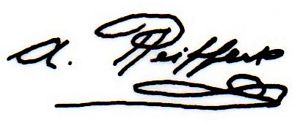 |
|
Arnulfo J. Basáñez took over as manager on 15 July 1903Memoria de las Instituciones de Crédito, correspondiente al año 1903. In October 1912 Basáñez was Administrator Principal del Timbre in Túxpan, Veracruz and, possibly under pressure, signed the minutes of the town council supporting the revolt of General Félix Díaz. He signed $10, $20, $500 and $1,000 notes dated 15 July 1903. |
 |
|
The Frenchman Pedro Assemat ran J. Prom. Sucs., a firm dedicated to wholesale/retail trade and commissions. He owned "El Ferrocarril", a multi-departmental warehouse that sold groceries and items for sumptuous consumption, such as porcelain, glassware, wines, spirits and preserves of French origin and Mexican products. He also represented the Cie Generale Atlantique, whose merchant and passenger ships made monthly voyages between Spain, France, Cuba, Mexico and the United States. He invested in various businesses, speculated in petrol-bearing land, and was a member of Companía Harinera del Golfo, S. A. and five oil companiesPánuco Topila Petroleum, Hispano-Mexicana, Tampico y Amatlán; S. A., La Herradura, S. A. and Los Perforadores. In the last he was associated with the German Ricardo Eversbuch, among others (Boletín de la Cámara Nacional de Comercio de Tampico, 1 January 1913). Assémat signed $5, $50 and $500 notes dated 15 July 1903 and then all the notes up to 1914. |
 |
Interventor
|
Felipe González signed the bank's first notes dated 1902 and 1903. Gonzalez died in Monterrey, Nuevo León on 5 February 1910CEHM, Fondo CDLIV Colección José Y. Limantour, 2a. 1910, carpeta 14, legajo 27. |
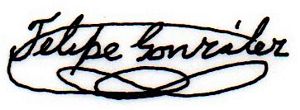 |
|
He was born on 22 January 1869 and died in Tampico on 12 March 1939. |
 |
|
Francisco Olivares He signed the notes dated 1911. |
 |
|
Juan Hermosillo was a steamship agent. He was elected comisario suplente of the bank on 9 March 1907El Correo Español, Año XVIII, Núm. 5,203, 3 April 1907 and later became Interventor. He signed the notes dated 1913 and 1914. |
 |
Consejero
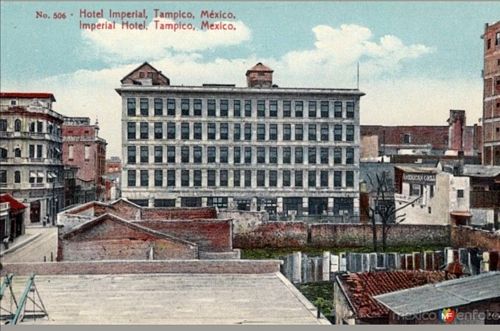
Hotel Imperial, Tampico
|
José María Raz came from Túxpan, Veracruz and was a leading businessman in Tampico. He was Presidente Municipal of Tampico in 1902 and 1904. In early 1920s he constructed the Hotel Imperial in the port in a New York style. He signed notes dated 1902 and 1903. |
 |
|
Tomás J. Ugarte was a wealthy Spaniard who in 1893 operated a steamship line from Tampico to Progreso, YucatánEl Tiempo, Año XI, Núm. 2,978, 5 August 1893 and in 1904 was Presidente of the Compañía Minera “La Tampiqueña”Periódico Oficial, Tomo XXIX, Núm. 28, 5 March 1904. His company, “Tomás J. Ugarte y Compañía” ran the “La Veracruzana” brickworks and in October 1907 he donated 10,000 bricks for the enlargement of the building housing the pumps for Tampico’s drinking waterThe Mexican Herald, Vol. XXV, No. 55, 25 October 1907. In 1909 he lived at calle 3a de Marsella núm. 53, Mexico City but owned 9,000 hectares on the right bank of the Tamesí river, in TamaulipasDiario Oficial, Tomo CVII, Núm. 29, 2 April 1910. He is recorded as owning the haciendas of Peñitas and of Diego de la Lastra y Compañía, in Alamitos.. He had died by 1919. He signed notes dated 1902 and 1903. |
 |
|
Jerónimo J. Bergan, a German, represented the firm Federico Stussy Sucs. On 1 January 1909 his company, Bergan y Saltzkorn, joined with Carl Heynen y Co. to form the Agencia Comercial y Marítima Bergan, Heynen & Cia.Diario Oficial, 14 January 1909. He signed notes dated 1902 and 1903. |
 |
|
Juan José Castaños was a prominent member of the Spanish group that had established itself in Tula since the middle of the 19th century. He was born in Entrambasaguas, Spain in 1848. By the 1890s he had sufficient resources to begin acquiring land in the municipality of Miquihuana. Castaños owned four haciendas: Palos Blancos, in Bustamante, whose production was mainly of corn, lechuguilla, palm and espadín; de la Perdida, in Miquihuana, which produced lechuguilla; de la Pena, also in Miquihuana, but dedicated to the exploitation of wood; and del Tigre, in Ocampo, which generated mainly corn, rice, beans, chickpeas and sugar cane. Castaños and José Gándara would form the firm José Gándara S. C., of commission merchants ADIIH, BT, Caja 3, letter José Gándara, Cerritos, San Luis Potosí, to Banco de Tamaulipas, Tampico, 3 January 1909. In 1890, Castaños owned the Las Dos Banderas store, selling clothes, groceries and all kinds of national and imported products Castaños was the second largest shareholder with 60,000 shares (after the Banco Central Mexicano with 100,000). He signed notes dated 1902 and 1903. He died in 1908. |
 |
|
Angel Sainz Trápaga was the son of Ángel Sáinz-Trápaga Gutiérrez de la Garmilla. The latter was born in 1833 in Lavín de Lobos, Santander, Spain. The family business suffered from a prolonged drought and the Sainz Trápaga brothers went to the Americas in search of a better life. Manuel went to Cuba where he amassed a fortune and moved to Tampico, where he awaited the other three brothers, Víctor, Gregorio and Angel. Angel arrived in Tampico at the age of thirteen, worked alongside his brothers in various businesses and then moved into making high interest loans to other businessmen and was the major lender until the formation of the Banco de Tamaulipas. Angel married in 1870 and his wife’s dowry allowed him to increase his company’s capital. His son, Angel Sainz Trápaga y Zalvidea, was born in 1871. In 1880, Angel took complete control of Trápaga y Cía. and began a dizzying business career, became the leading businessman in Tampico, owning various mercantile establishments and dozens of urban and rural properties. In 1899 Angel bought the Naranjo hacienda in Quintero (today Mante), Tamaulipas, which he gave as a wedding gift to his daughter Joaquina Trápaga Salvídea when she married Gerardo Meade, from San Luis Potosi. Naranjo had oil deposits which led Joaquina and her husband to become prosperous oil producers. Angel also ventured into the oil sector with the purchase of shares in the Compañía Petróleo México y España, S.A.; Compañía de la Dos Estrellas, S.A.; El Fénix; and Productora de Petróleo, S.A. He died in 1923. He signed notes dated from 1902 to 1914. |
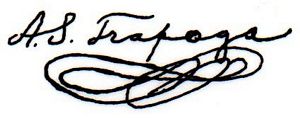 |
|
Guillermo Obregón Cortina was born in Mexico City on 12 July 1858. He was a lawyer who acted as abogado for this bank and abogado consultor for the Banco de Querétaro. He was diputado suplente for Veracruz in 1898 and for Tabasco in 1898 and 1900, and diputado propietario for Veracruz in 1900, 1904, 1908 and 1910. He died in Mexico City in 1928 at the age of 70. His son, Guillermo, married the daughter of Ramón Corral, Díaz’s vice-president. He signed notes dated from 1902 to 1914. Incidentally, in 1904, Obregón was trying to put together a collection of all the bank notes of MexicoABNC, folder 155, Banco Minero (1903(May)-1908(Dec))(. |
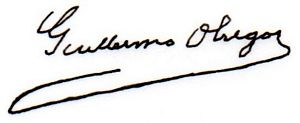 |
|
Carlos (Karl) Heynen was a prominent German businessman, involved in shipping and imports. In January 1896 he was Gerente General of the Agencia Comercial y Marítima of Tampico, and in August 1899 agent of the Munson steam line. In 1897 Heynen, Gustave Paterson, C. Ganahl and Santiago Snell founded the Agencia Comercial y Marítima Heynen, Paterson y Compañía, with a capital of $5,000AGNET, Notario Ricardo López y Parra Tampico, 5 January 1897. On 1 January 1909 Carl Heynen y Cía. joined with Bergan y Saltzkorn to form the Agencia Comercial y Marítima Bergan, Heynen & Cia.Diario Oficial, 14 January 1909 (also called Heynen, Eversbuch y Cía.) which by 1917 had a share capital of $100,000 AGNET, Protocolo de Ricardo López y Parra. Tampico. 13 April 1917. These agencies played an important role in the handling, storage and transportation of goods. Heynen served as consul for Austro-Hungary and vice consul for the Netherlands and Chile. He signed notes dated from 1902 to 1914. |
 |
|
D. L. Raz He signed notes dated 1910. |
 |
|
F. R. Zorrilla(?) or Lamillo(?) He signed notes dated 1910. |
 |
|
Pafnuncio Padilla became a consejero of the Confederación de Cámaras Nacionales de Comercio in 1919 and was its president from 1921 to 1924. He signed notes dated 1910. |
 |
|
Juan B. Borde J & F. Borde ran the "Mercería Nueva", a haberdashery and hardware store (mercería y ferretería) in 1910. He signed notes dated 1910. He died in [ ] and was replaced at the bank’s AGM on 7 February 1912Diario Oficial, 26 February 1912. |
 |
|
Juan Amoravieta was a Spaniard who, as a member of Cruz y Amoravieta, owned “Los Precios de Francia”, a clothing store. He was one of the owners of the Compañía de Fuerza Eléctrica de Tampico, alongside Amado N. JáureguiOthers were Pablo Saltzkom, Tomás Manteca and Nicolás del Campo (AGNET, notario Ricardo López y Parra, Tampico, 26 September 1906). He signed notes dated from 1910 to 1914. |
 |
|
Amado N. Jáuregui owned the San Gabriel and El Progreso haciendas. He was one of the owners of the Compañía de Fuerza Eléctrica de Tampico, alongside Juan AmoravietaAGNET, notario Ricardo López y Parra, Tampico, 26 Septrember 1906). He was Presidente Municipal of Tampico in 1903. He signed notes dated from 1910 to 1914. |
 |
|
Ricardo Everbusch Ricardo Everbusch was president of the Cámara Nacional de Comercio de Tampico in 1888. In January 1908 he became an active partner in Guillermo Büsing y CíaDiario Oficial, 6 January 1908 and was still with the company five years later when it became Guillermo Büsing y Cía, Sucs.Diario Oficial, 4 January 1913. Together with Jerónimo J. Bergan and Carlos Heynen he formed the Agencia Comercial y Maritima Bergan, Heynen & Cia in January 1909Diario Oficial, 14 January 1909. By 1913 the general agents in Tampico was Heynen, Everbusch y Cía. He was the German vice-consul in TampicoEl Heraldo Mexico, Tomo L, Núm. 129, 11 March 1911 and was accused in 1917 by the U. S. State Department of being a German spy{foornote}El Democrata, Tomo V, Núm. 226, 19 September 1917. He signed notes dated from 1910 to 1914. |
 |
| [identification needed] |  |

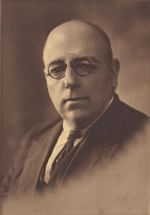 Benito Zorrilla Castilla took over as Interventor on Felipe González' death and signed the notes dated 1910.
Benito Zorrilla Castilla took over as Interventor on Felipe González' death and signed the notes dated 1910.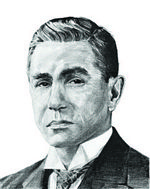 Pafnuncio Padilla Barragán was born in Montemorelos, Nuevo León.
Pafnuncio Padilla Barragán was born in Montemorelos, Nuevo León.